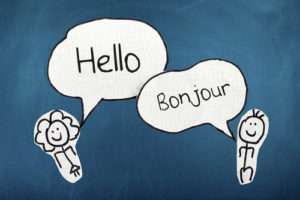
How Do Translation And Adaptation Differ?
Translation is simply a literal translation of content from one language to another. Adaptation takes translation one step further and modifies the content to make it culturally appropriate and accurate.
What Are The Aspects That Distinguish Adaptation From Translation?
- When communicating a message to a listener or reader whose mother tongue is not the same as our own, especially when that person does not even understand the language, we must use different ways or methods to get the message across as clearly as possible. While we can use gestures, signs, or noises in order to make ourselves understood, when communicating something written, we must turn to translators.
- One of the tools used in translation is adaptation. It is used in many cases, as cultural differences between different speakers can cause confusion that can sometimes be tricky to understand or simply prevent us from understanding each other. Adaptation is not to be confused with Localization, however, which is used when the target audience speaks a different variant of the same language, such as in the case of Latin America. When adapting a message, we are not translating it literally. This does not mean, however, that when adapting a message or idea we are being unfaithful to the original message, or that we are not doing our job well (translating). Simply, there are situations in which it is required. British scholar Peter Newmark defines Adaptation, taken from Vinay and Darbelnet, as, “The use of a recognized equivalent between two situations. It is a process of cultural equivalence: Dear Sir/Muy señor mío; yours faithfully/Le saluda atentamente.”
- Adaptations, also known as “Free Translations” are when the translator substitutes cultural realities or scenarios for which there is no reference in the target language. A simple example would be translating “Friday 13th” from English into Spanish. In this case, we would need to adapt the translation to the cultural reality of the Spanish-speaking world and translate it as “Martes 13” (Tuesday the 13th). Adaptations are equivalents and can be seen more clearly in the translations of TV shows or movies, where conversations or cultural references must be adapted for foreign audiences.
- When comparing translation and adaptation, we are comparing two ways of communicating a message. In many cases, it is impossible to translate a text without making an adaptation, as a “literal” translation of the message would cause a loss of all or part of the meaning for the target audience. It is important to know when to adapt a message when an expression might have a more appropriate equivalent for a given situation. This makes us better translation professionals. Increasingly, people are considering the translation of literary works as a form of adaptation and not strictly language translation.
- I know that when younger people think about translation as a career, they often imagine a specific, slender sliver of the translation services world: Literary translation. They see themselves sitting at an outdoor café, sipping a coffee and taking leisurely, cultured turns bringing a work of literary genius from one language into another – and, of course, being paid handsomely for the work. I’m not saying those opportunities don’t exist, but they are certainly rare, and the funny thing is most of the people daydreaming about them don’t think too hard about the deeper implications of that sort of translation work.
- Specifically, is it even translation? Or is it actually a form of adaptation? I have even heard the term “trandaption” tossed about in all seriousness. Many academics these days resist the idea that any literary work can be brought from one language to another in any pure sense, that the very act of bringing it across linguistic and cultural barriers results in inevitable changes to the work that can only be described as an adaptation, similar to when a novel is adapted into a screenplay or a stage play brought to the television screen.
What are The Characteristics of Adaptation in Literary Translation?
- Transformative
- After all, the adaptations we tend to think about – say, taking a novel and making a screenplay from it – are usually faithful to the source material, but also transformative. After all, while you want to keep the tone, the plot, and the characters, if you literally bring every moment from a novel to the screen you would end up with a sixteen-hour film, in some cases. So adaptation involves judiciously making creative decisions about the new version of the work. But is this any different than translation work? You’re still making creative decisions about the new version. You’re choosing vocabulary and grammatical structures that the original author might not make if they were fluent in the target language, and one could argue that even if they were and the translation was being performed by the author it’s still an adaptation, as the same creative decisions have to be made.
- Not Literal
- In fact, the only way a translation project might be considered not an adaptation would be if it was a Literal word for word translation somehow, which would, in turn, require a language pair that is very compatible in terms of grammar and sentence structures. Even assuming such a pairing is possible, it’s hard to imagine you wouldn’t encounter a single instance where you’d have to make a creative vocabulary or sentence structure choice, thus transforming the work and entering into the world of adaptation.
- Of course, this is largely an intellectual concern – the actual work isn’t affected by how you regard it. However, the way the work is judged by clients and others might be, so it’s worth exploring the ramifications regarding translation as adaptation, if only so you have something intelligent to say when a client asks you about it.
What Are The Steps In The Process Of Implementation of Adaptation?
Forward translation
- One translator, preferably a health professional, familiar with the terminology of the area covered by the instrument and with interview skills should be given this task. The translator should be knowledgeable of the English-speaking culture but his/her mother tongue should be the primary language of the target culture.
- Instructions should be given in the approach to translating, emphasizing conceptual rather than literal translations, as well as the need to use natural and acceptable language for the broadest audience. The following general guidelines should be considered in this process:
- Translators should always aim at the conceptual equivalent of a word or phrase, not a word-for-word translation, i.e. not a literal translation. They should consider the definition of the original term and attempt to translate it in the most relevant way.
- Translators should strive to be simple, clear and concise in formulating a question. Fewer words are better. Long sentences with many clauses should be avoided.
- The target language should aim for the most common audience. Translators should avoid addressing professional audiences such as those in medicine or any other professional group. They should consider the typical respondent for the instrument being translated and what the respondent will understand when s/he hears the question.
- Translators should avoid the use of any jargon. For example, they should not use:
- technical terms that cannot be understood clearly; and
- Colloquialism, idioms or vernacular terms that cannot be understood by common people in everyday life.
- Translators should consider issues of gender and age applicability and avoid any terms that might be considered offensive to the target population.
Expert panel Back-translation
- A bilingual (in English and the target language for translation) expert panel should be convened by a designated editor-in-chief. The goal in this step is to identify and resolve the inadequate expressions/concepts of the translation, as well as any discrepancies between the forward translation and the existing or comparable previous versions of the questions if any. The expert panel may question some words or expressions and suggest alternatives. Experts should be given any materials that can help them to be consistent with previous translations. Principal investigators and/or project collaborators will be responsible for providing such materials. The number of experts in the panel may vary. In general, the panel should include the original translator, experts in health, as well as experts with experience in instrument development and translation.
- The result of this process will produce a complete translated version of the questionnaire.
Back-translation
- Using the same approach as that outlined in the first step, the instrument will then be translated back to English by an independent translator, whose mother tongue is English and who has no knowledge of the questionnaire. Back-translation will be limited to selected items that will be identified in two ways. The first will be items selected by the WHO based on those terms/concepts that are key to the instrument or those that are suspected to be particularly sensitive to translation problems across cultures. These items will be distributed when the English version of the instrument is distributed. The second will consist of other items that are added on as participating countries identify words or phrases that are problematic. These additional items must be submitted to the WHO for review and approval.
- As in the initial translation, emphasis on the back-translation should be on conceptual and cultural equivalence and not linguistic equivalence. Discrepancies should be discussed with the editor-in-chief and further work (forward translations, discussion by the bilingual expert panel, etc.) should be iterated as many times as needed until a satisfactory version is reached.
Pre-testing and cognitive interviewing
- It is necessary to pre-test the instrument on the target population. Each module or section will be fully tested using the methodologies outlined below.
- Pre-test respondents should include individuals representative of those who will be administered the questionnaire. For this study, dependent opioid users should be used to test the translated instruments, although such users could be drawn from sources other than those used to recruit study participants – preferably persons who would not otherwise be eligible for the main study.
- Pre-test respondents should number 10 minimum for each section. They should represent males and females from all age groups (18 years of age and older) and different socioeconomic groups.
- Pre-test respondents should be administered the instrument and be systematically debriefed. This debriefing should ask respondents what they thought the question was asking, whether they could repeat the question in their own words, what came to their mind when they heard a particular phrase or term. It should also ask them to explain how they choose their answer. These questions should be repeated for each item.
- The answers to these questions should be compared to the respondent’s actual responses to the instrument for consistency.
- Respondents should also be asked about any word they did not understand as well as any word or expression that they found unacceptable or offensive.
- Finally, when alternative words or expressions exist for one item or expression, the pre-test respondent should be asked to choose which of the alternatives conforms better to their usual language.
- This information is best accomplished by in-depth personal interviews although the organization of a focus group may be an alternative.
- It is very important that these interviews be conducted by an experienced interviewer.
Documentation
- The final version of the instrument in the target language should be the result of all the iterations described above. It is important that a serial number (e.g. 1.0) be given to each version. Instructions for providing the electronic version of the final translated instrument to WHO will be provided.
- All the cultural adaptation procedures should be traceable through the appropriate documents. These include, at the least:
- initial forward version;
- a summary of recommendations by the expert panel;
- the back-translation;
- a summary of problems found during the pre-testing of the instrument and the modifications proposed; and
- The final version.
- It is also necessary to describe the samples used in this process (i.e. the composition of the expert panel and the pre-test respondent samples). For the latter, the number of individuals, as well as their basic characteristics, should be described, as appropriate.








Comment (1)
BonusLikes
February 1, 2021Real superb visual appeal on this website , I’d value it 10 10.
Comments are closed.